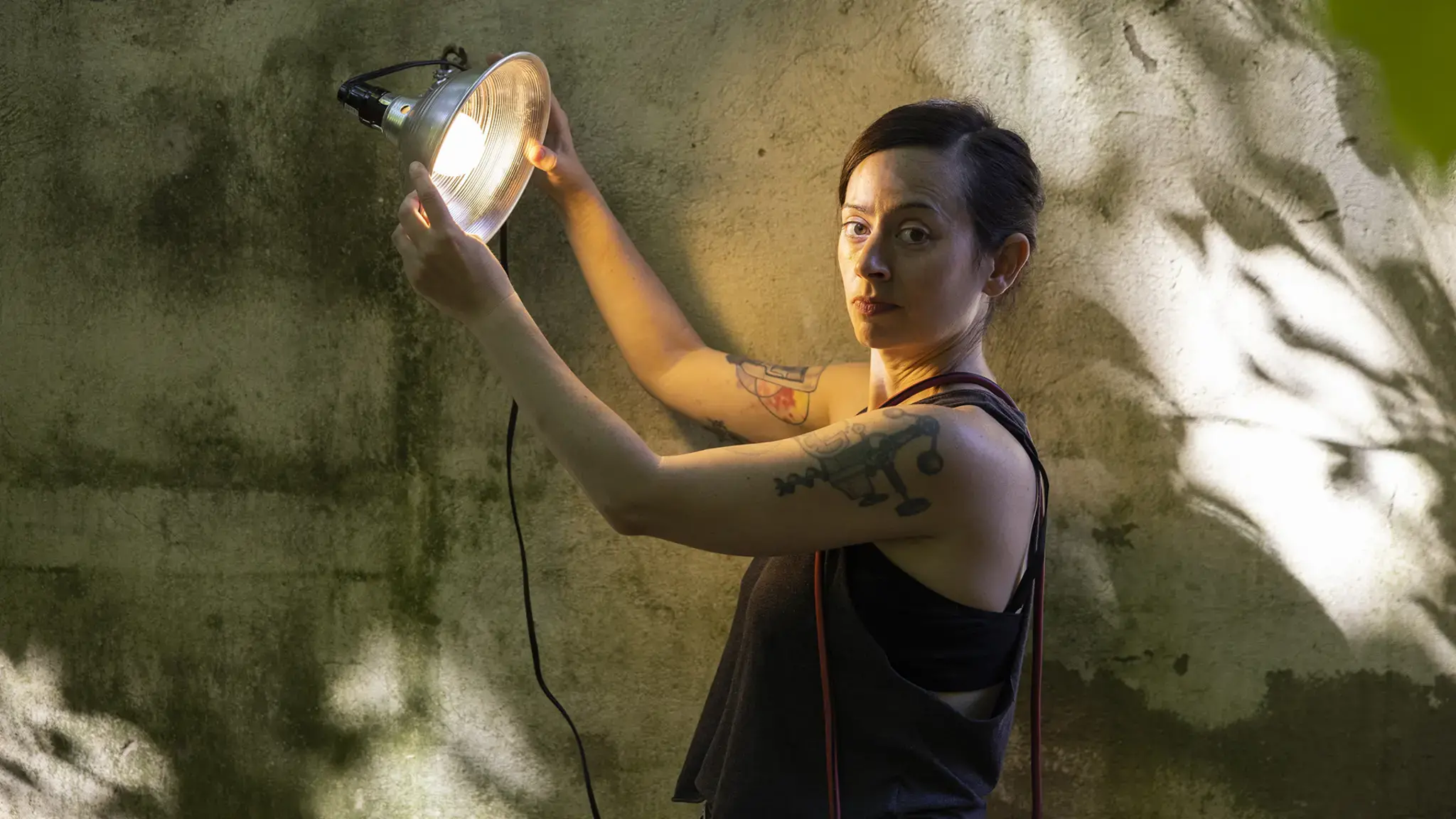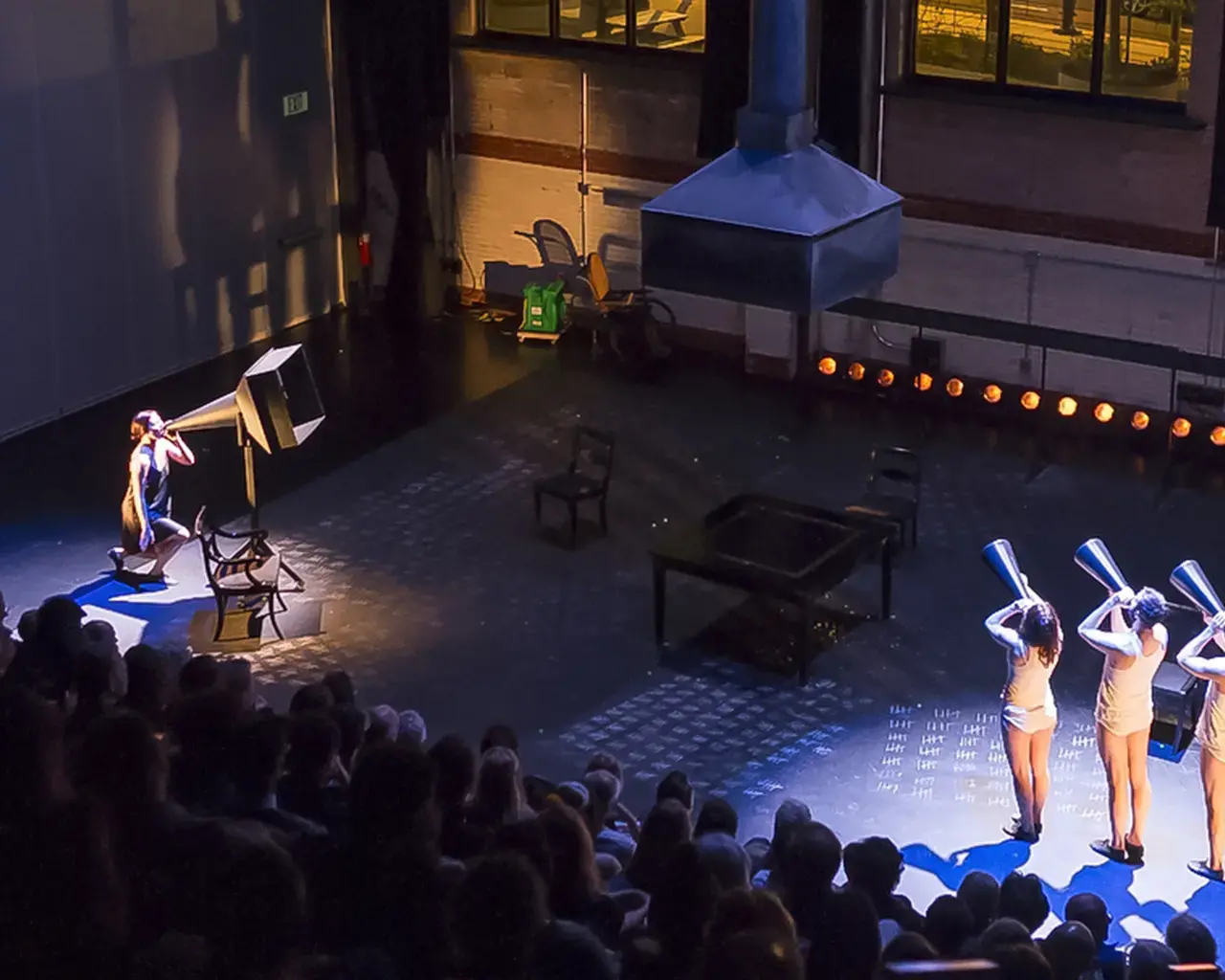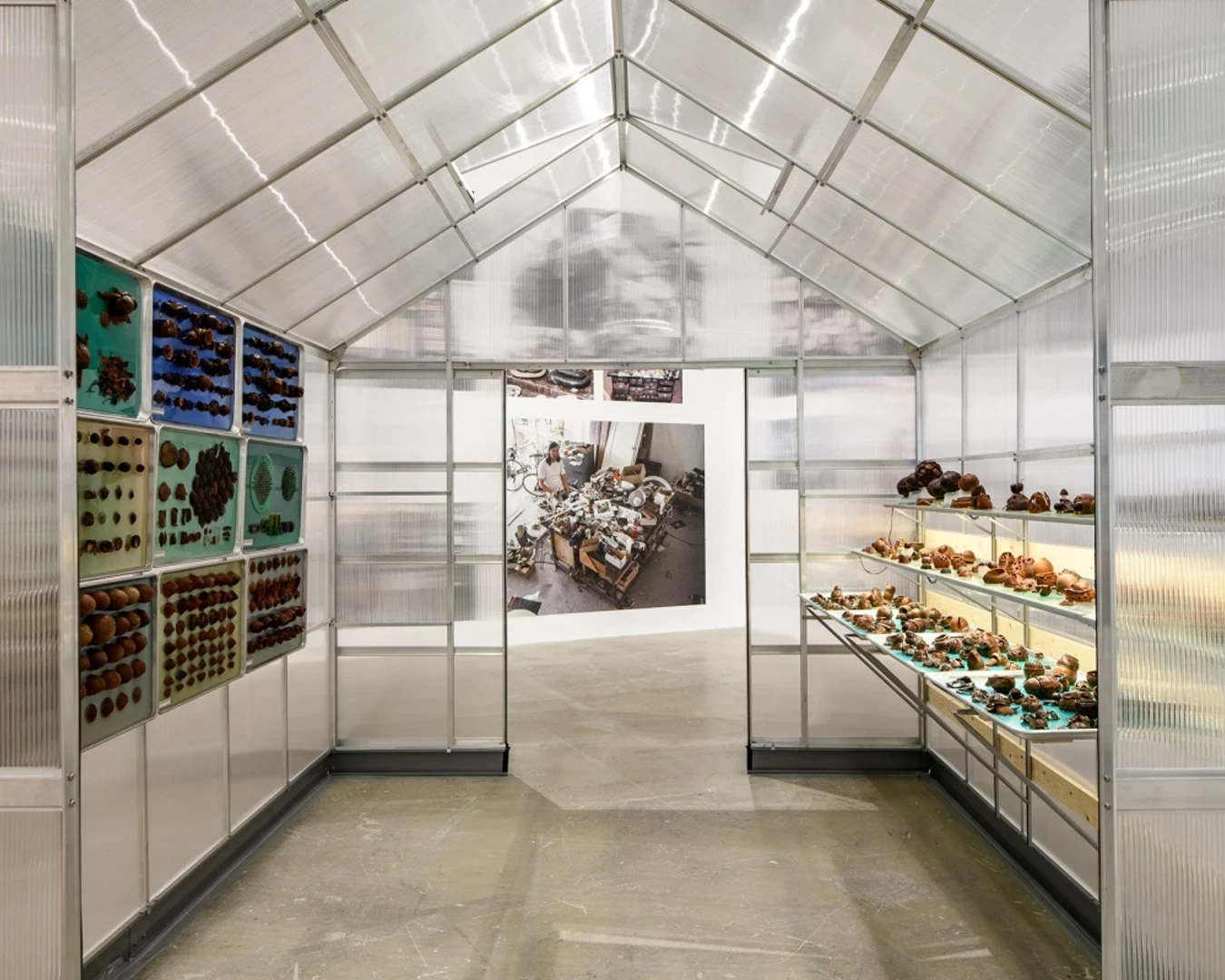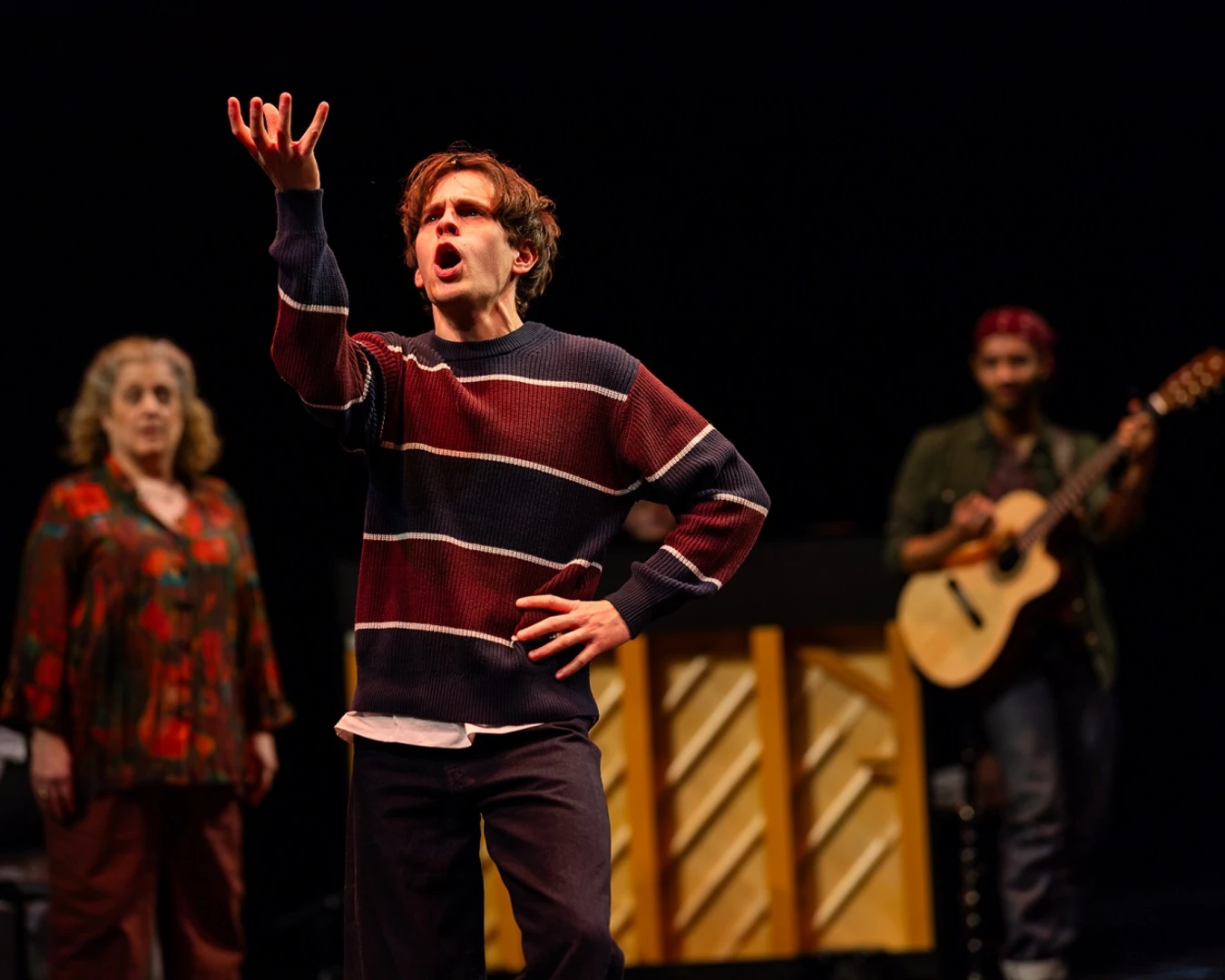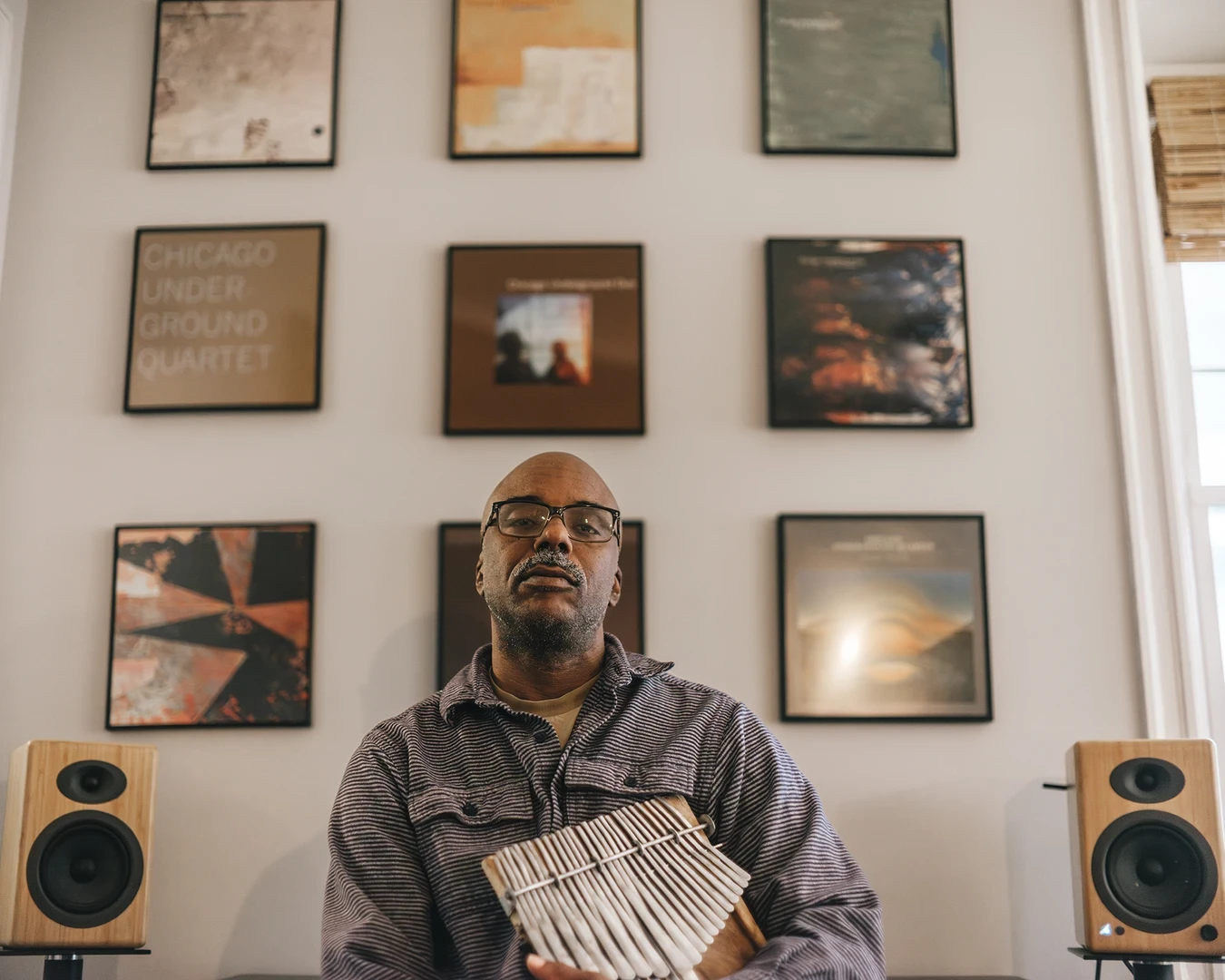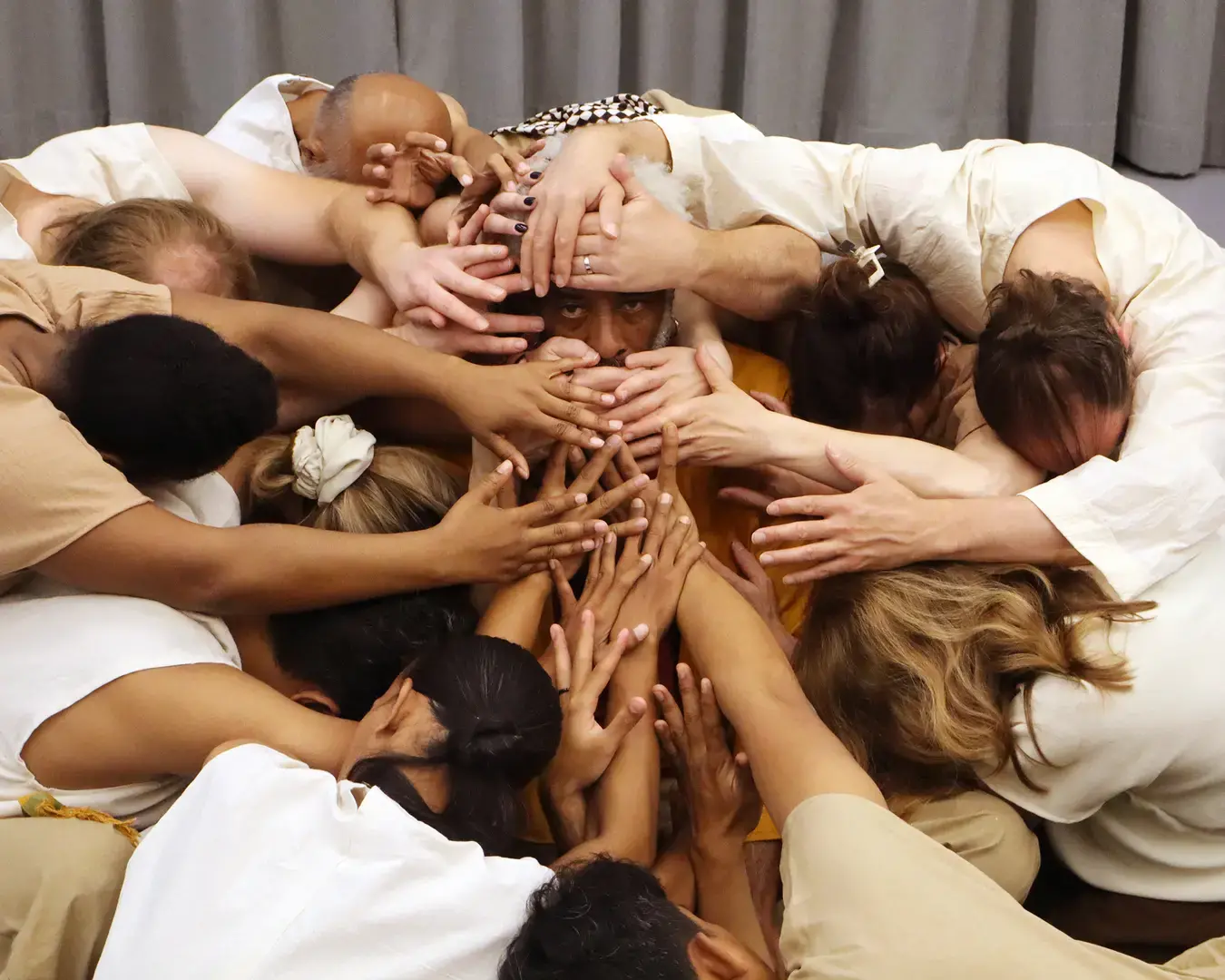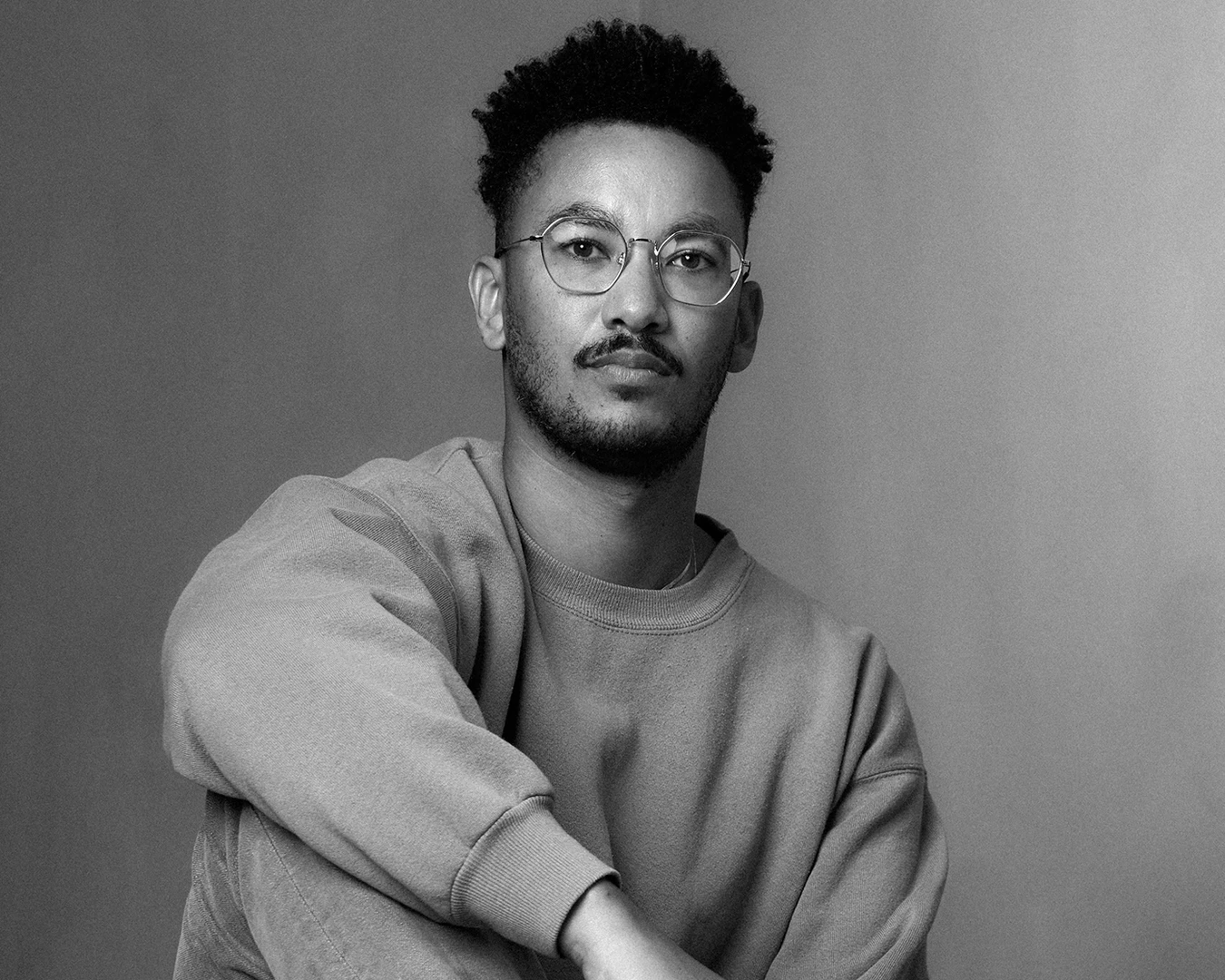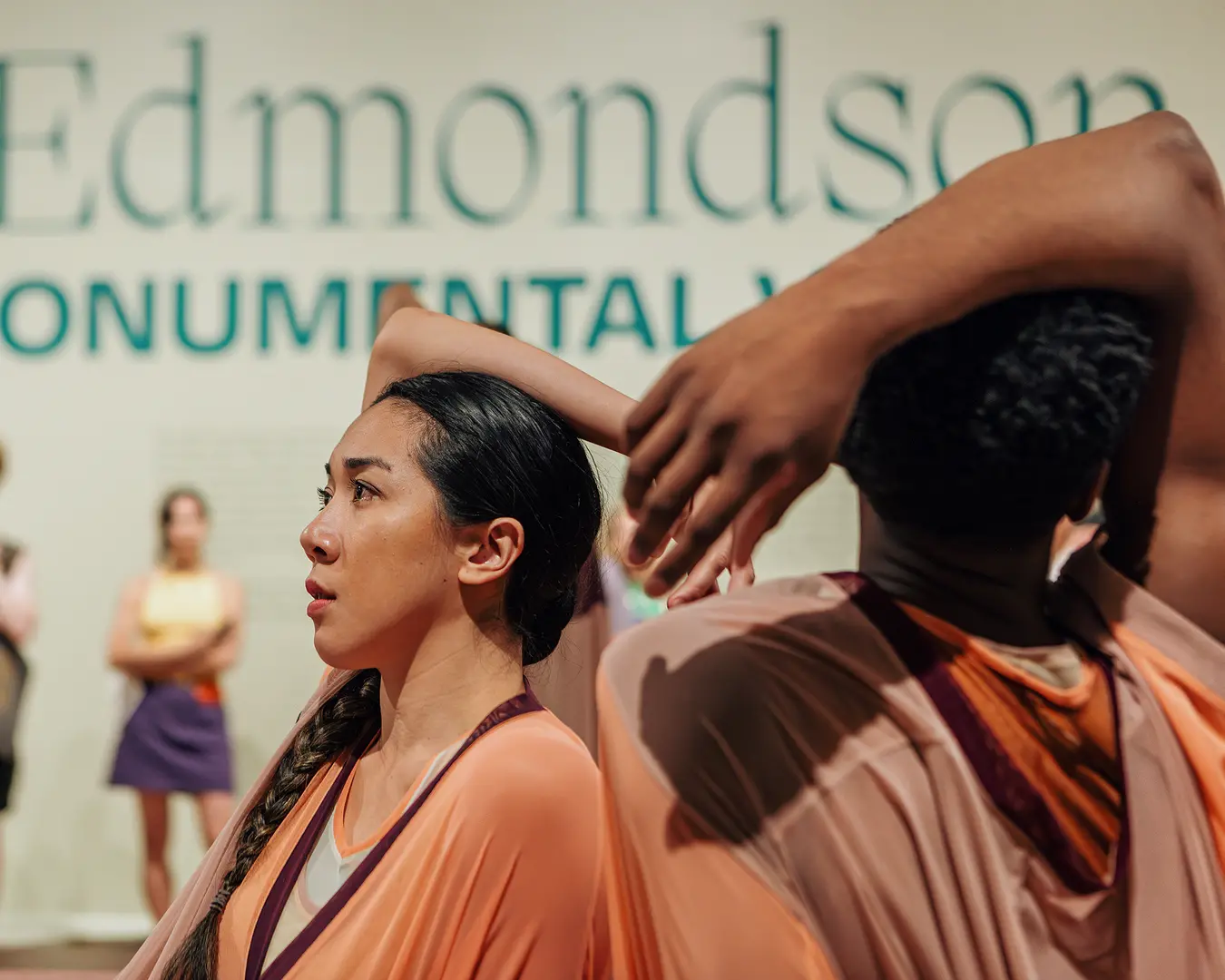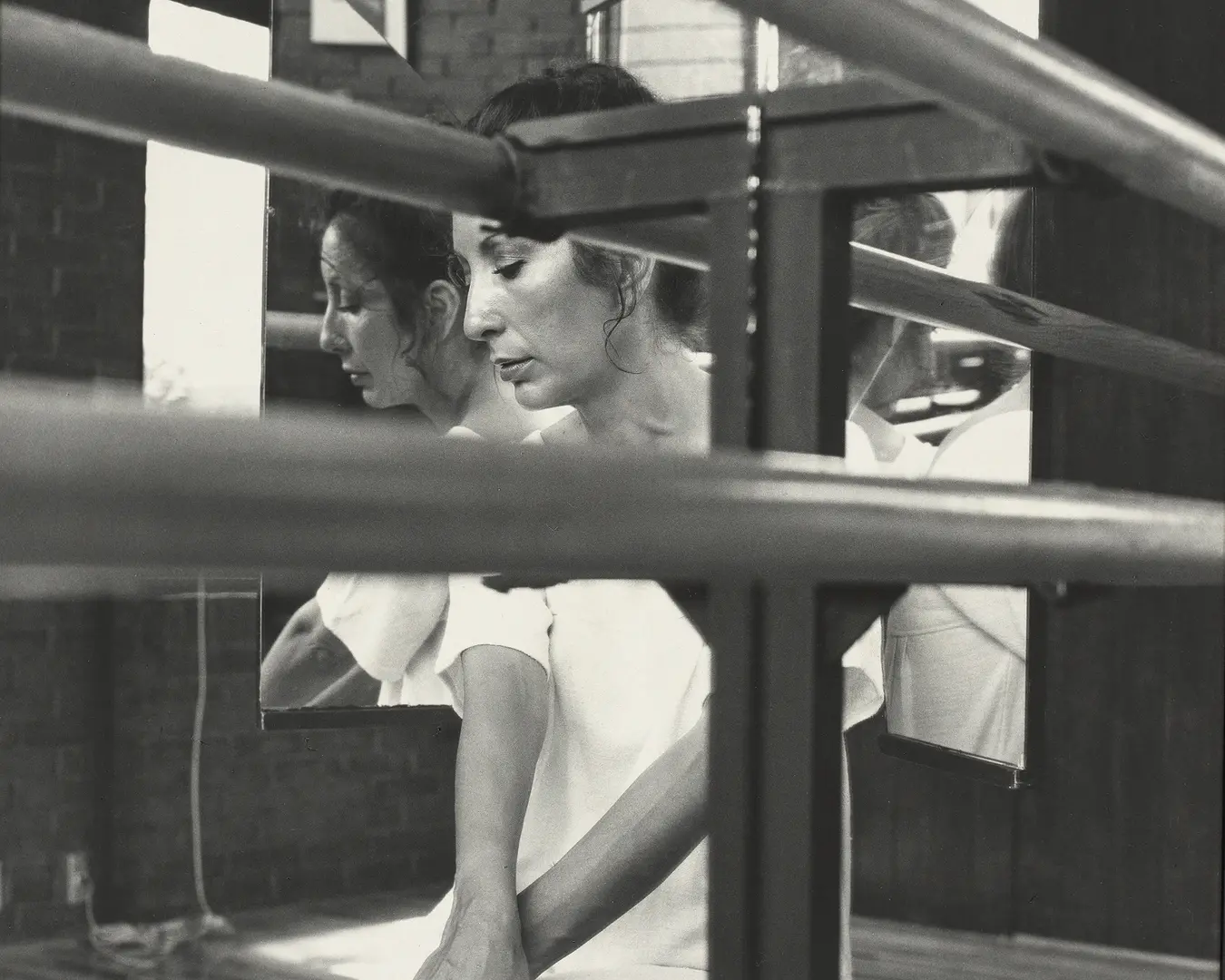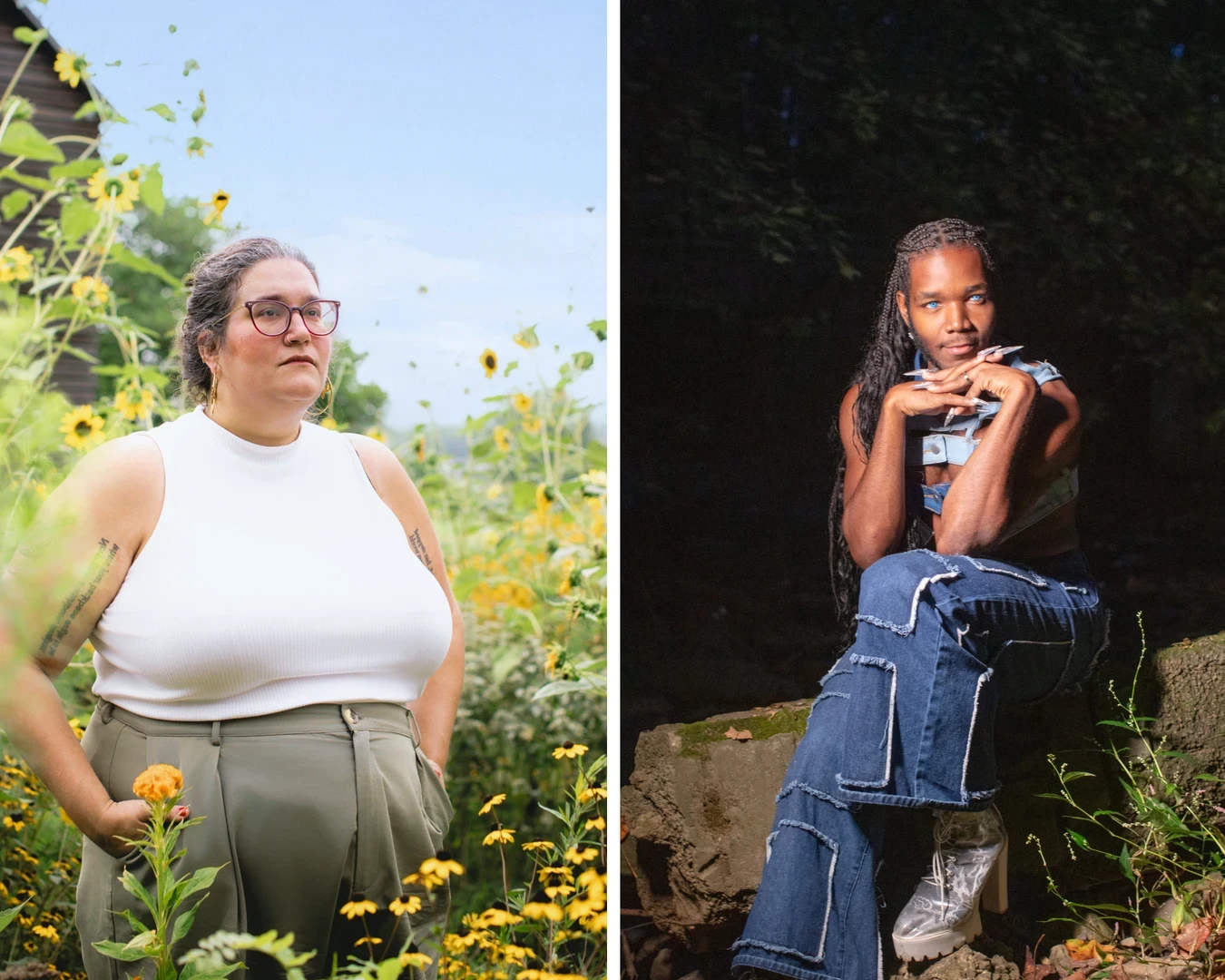Our “Pew Fellow of the Week” series focuses on the artistic lives of our Pew Fellows: their aspirations, influences, and creative challenges.
Lighting designer Maria Shaplin (2019) spoke to us about the works that shaped her approach to her own practice, what makes Philadelphia’s artistic community distinctive, and how her theater background comes in handy with a new baby.
Shaplin creates immersive theatrical worlds through an experimental and deeply collaborative design process. In addition to her Pew Fellowship, she won a 2018 Barrymore Award for Outstanding Lighting Design for her work on Indecent at Arden Theatre Company, and she was awarded an Independence Foundation Fellowship in the Arts in 2015. Recent work includes lighting design on inFLUX Theatre Collective’s The Choice, which ran as part of this year’s Philadelphia Fringe Festival, and InterAct Theatre Company’s The Chinese Lady, running October 29 to November 21.
When you start a new project, where do you begin?
Every project starts with intaking: research, conversations, and the integration of this new spark of an idea into the existing landscape of my brain. I do lots of visual research, making folders of images I collect from the web. Since I was a teenager, I’ve been doing lots of collage, and this practice of hoarding images comes from that part of my brain. I love to create juxtapositions and put seemingly disparate objects of ideas in conversation with each other.
What is your daily creative routine? How has it changed during the pandemic?
I had a baby at the very beginning of the pandemic—a week before lockdown—so my routine has changed in response to both new realities. Most theaters went into hibernation last season, so much of my lighting design has been on pause until very recently. But being a theater-maker has come in handy as a full-time parent. We theater folks are pretty good at playing: constructing new imaginative realms and improvising. Obviously, there’s less tangible output—and much less of that sparky, crackling collaboration when your scene partner is a baby or toddler—but playing all day requires copious amounts of endurance and reinvention. I definitely feel like I’ve been working. We have a small house, so we can’t own lots of toys, so the toys we do own get flipped around and turned inside out to make new landscapes and inventions. When the kid naps and after bedtime, I go full tilt into a few of my side-hustles: graphic and web design. Those projects are special to me because I can have my own process, flow, and internal journey. The precious hours spent alone making art fly by so very fast. I know that other artist parents will feel me on that one.
What is your biggest motivator as an artist?
I have a need to make stuff. When lighting design is not available to me as a medium, I find lots of other projects to focus on and fill that need. It's that desire to be useful and productive and to make pretty and delightful things. Simply put, it’s feels great when someone reacts to something you’ve done by saying, “That’s cool!”
What’s your biggest fear as an artist?
My biggest fear is being isolated from my community and collaborators and rattling around in my own brain a bit too much. I think I could spin out in unproductive directions if I didn’t have some amazing artist friends with whom I can process. Our society, culture, and politics are way too complicated to understand on your own with your own thoughts. I need my people and my community to make sense of things.
What images or things keep you company in the space where you work?
In my home office, I need natural light, walls arranged with art posters, and a desk containing a few whimsical tchotchkes. I rotate pictures and ephemera in and out of a large wall collage that surrounds my desk. My favorite colors are green and electric peach, so those colors are always present in my eye line. The desktop of my computer is a photo of some beautiful sea slugs. Looking at the beautiful and powerful images that I’ve assembled resets my brain and can help remind me of my aesthetic principals and get me through a brain fog.
What was the first work of art that really mattered to you? Did it influence your approach to your work?
There are so many books, TV shows, toys, and art that mattered so very much to me as a child. Being a new parent and being re-immersed in the world of cartoons and kids’ books, I’m realizing what a large impact these mediums had on my visual sensibility and love of storytelling.
If I skip forward in time to adulthood, a piece of art that really revved my motor was 14 Stations by Robert Wilson. I’m a major fan of installation art—artists like Joseph Beuys, Ai Weiwei, Ann Hamilton—but with Wilson, when I saw 14 Stations at MASS MoCA, I didn’t know that he was also a theater artist. When I learned about his work in theater, the possibilities of that medium really opened up for me. Each tableau is brilliant.
I also saw a show early in my theater career that was a game-changer: White Cabin by a Russian company, AKHE Theater. It was the most dynamic and inventive work I’d ever seen—clown and dance. It was a symphony of objects and shifting composition, tragic and ecstatic, an emotional rollercoaster.
Why do you choose to work and live in Philadelphia? In your experience, what makes this arts scene distinctive?
My brother had worked in Philadelphia with Pig Iron Theatre Company, so I had been here and knew that it’s a pretty experimental theater scene and people are making work at all levels, from world-class professional dance down to shoestring basement stuff. I moved here to attend grad school at Temple University. I wanted to get a “proper” graduate theater education because I hadn’t studied theater at all up to that point, other than extracurricular activities and summer gigs. I had seen and made tons of theater by my early twenties, but I didn’t know the terminology for anything, didn’t know how to draft any of my ideas, and didn’t have enough technical know-how to communicate my design ideas and get beyond being a stagehand. I got a lot out of my Temple experience. Philadelphia makers are generally unpretentious, flexible, and game to try weird stuff.
What’s the one thing you want people to know about what you do?
I wish that non-artists more often thought of what we do as actual work. It’s true that theater artists play for a living, but that doesn’t mean that it’s not grueling or monotonous at times or really any different from any other profession. You put in your 10,000 hours to achieve mastery, just like any other line of work. I have often encountered an assumption that artists don’t work as much or as hard as people who work 9-to-5 jobs, but I don’t think that’s true. Our work often looks different at times, but there’s also tons of administration, scheduling, fundraising, etc. I have friends and family who think that what I do is a flight of fancy, or that I’m living a privileged sort of escapist lifestyle, like, “How fun that you’ve joined the circus, but when are you going to get a real job and be a responsible adult?” The fact that most artists make a lot less money than other professions doesn’t help that perception. It makes me feel sad, because it’s that type of thinking that has sidelined other work in our society as “less than,” like primary caregiving for example. There’s a job that is unpaid and often not considered to be work, but it is most definitely essential work. You just don’t clock in or go to an office to do it.
Whose opinion about your work do you respect most?
I respect a lot of people’s opinions because I’m interested in different perspectives on my work. Lighting is such a subjective art form—everyone’s eyes and brains work differently, and lighting can have a subtle emotional impact that is not always noticed by the fronts of people’s brains. So if people even notice the lights, I’m interested. When I’m looking for an unbiased opinion, I’ll consult an outside eye that is not privy to my process or the ins and outs of how the work got made. Sometimes I worry that directors and colleagues like my work because they like me or enjoy our process too much to remain objective, but that anxiety isn’t really grounded in anything other than my own anxiety about the quality of my work. And sometimes my brain gets fatigued looking at the same stage pictures over and over again, so it helps to get lots of different thoughts and perspectives. There’s a handful of theater directors who have a very keen eye for lights and have lots to say, for better or for worse. Mostly better. I enjoy rigorous debate and am happy to keep drafting and drafting and making different pictures until the cows come home. The good thing about opinions is that I can delete them from my memory if they’re not helpful. When people are very critical of my work, I always find it helpful.
